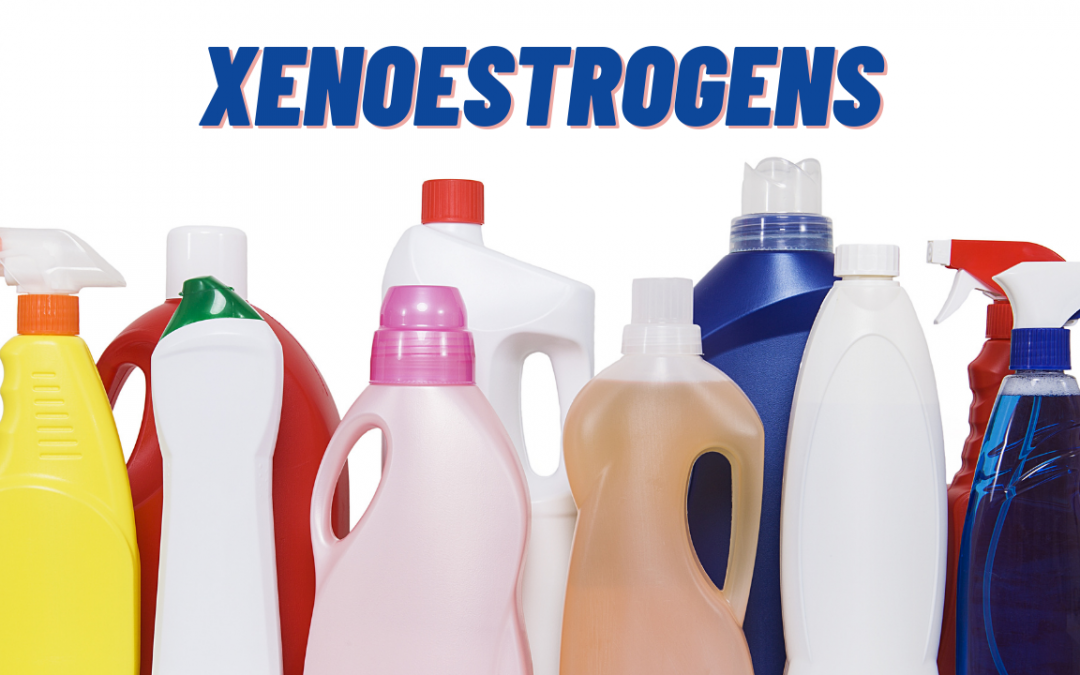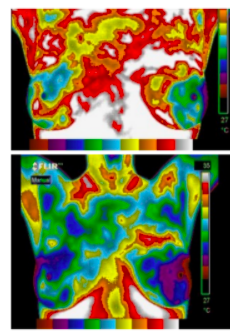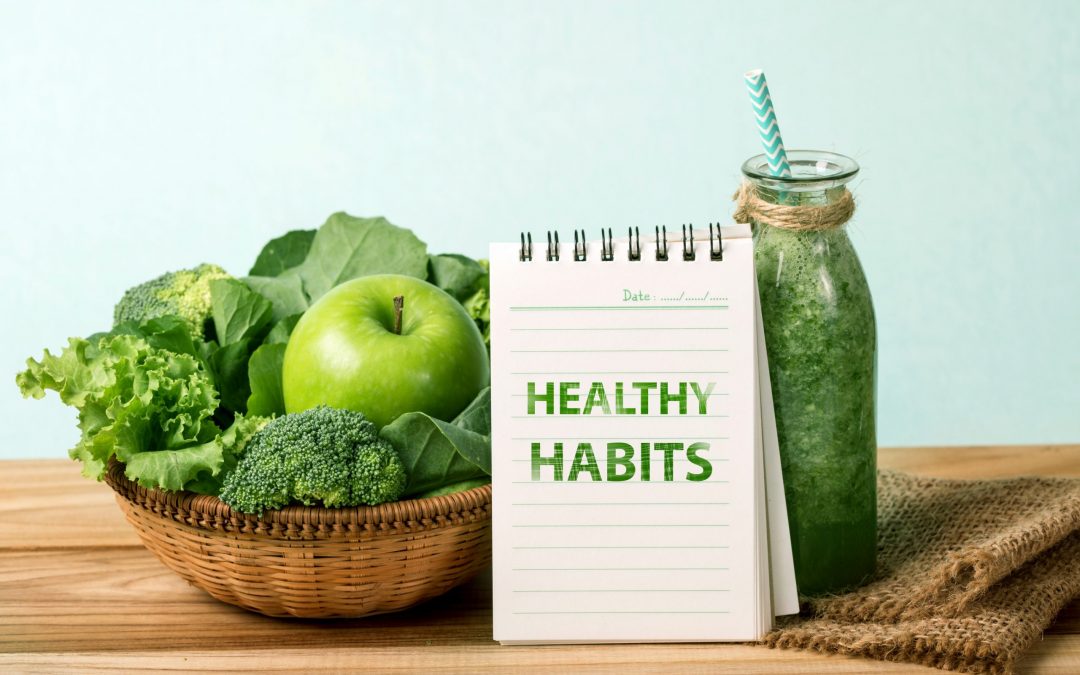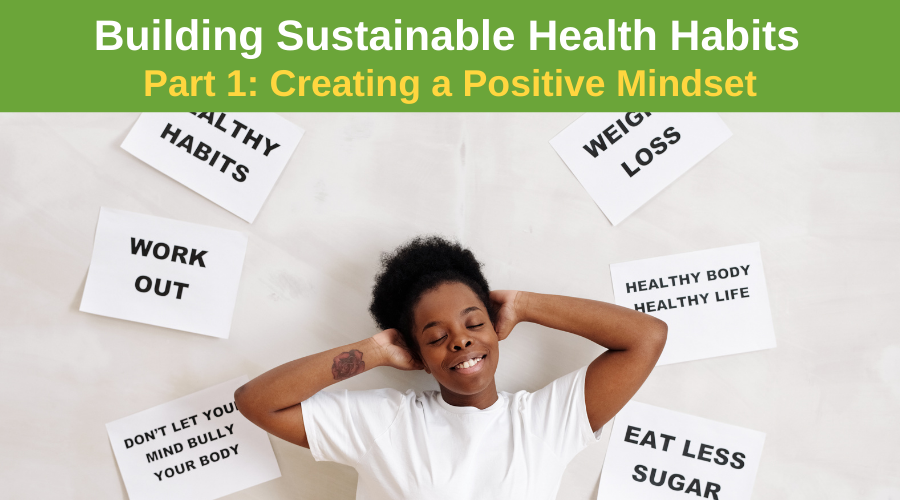
by Susan Brady | Oct 28, 2021 | Healthy aging

Estrogen is what makes a woman uniquely female. It is a critical hormone for the proper function of so many organs in a women’s body. Beyond our reproductive organs, estrogen is important to our skin, our brain, our heart, our intestines, and our bones. All of the cells of these tissues have estrogen receptors on them, where estrogen binds and produces its effects.
However, there are certain environmental chemicals that mimic the structure of estrogen and can either block or bind to these estrogen receptor sites on our cells. When this happens, it prevents our biologically made estrogen from binding there.
These chemicals are called xenoestrogens. They are essentially artificial estrogen. When these xenoestrogens bind to our cells they interfere with the normal activity of estrogen. This can disrupt the proper functioning of our endocrine system resulting in various health issues.
Many xenoestrogens can interfere with bone remodeling leading to bone loss and osteoporotic fractures. They can also increase susceptibility to cancers, such as breast, uterine, and ovarian cancer. Even in men, they can increase the risk of prostate, and testicular cancer. Overexposure to xenoestrogens can also lead to a predisposition of hypothyroidism, weight gain, poor memory, neurologic disorders, diabetes, and more.
Where do these xenoestrogens come from?
You are likely being exposed to xenoestrogens every day through the food you eat, the water you drink, the medication you take, the personal care products you use, the cleaners you use, and the plastic containers that you store your food in. Unfortunately, when these chemicals get into our bodies, they get stored in our fat. They build up over time and can remain in our fat stores for years.
Some of the most common chemicals include:
- Phthalates. A group of chemicals that are used to make plastics more durable. But not only are phthalates in plastics like the plastic food storage containers but also hundreds of other products such as cosmetics, soaps, shampoos, vinyl flooring, and toys.
- Alkylphenol ethoxylates (APE). APEs are added to detergents, cleaning products, hair care products, pesticides, certain hand sanitizers, and perfumes. Many APEs have been banned in Europe, yet the United States still allows manufacturers to put these toxins in our products.
- Parabens. Parabens are often found in personal care products, make-up, lotions, and sunscreens. Essentially any product that contains fragrances also most likely contains parabens.
- Perfluorochemicals (PFC). PFCs are used in nonstick cookware, stain-resistant carpets and fabrics, and food packagings like microwave popcorn bags and fast-food wrappers.
- Bisphenol A (BPA). Until recently, BPAs were widely used in plastic water bottles. They continue to be used in personal hygiene products, the inner lining of canned foods, and the thermal printer receipts that you get when checking out at a store. Luckily, several stores like Target, CVS, Mom’s Organics, and Whole Foods have now switched over to using phenol-free receipt papers.
- Pesticides. Pesticides are perhaps the biggest source of xenoestrogens. Conventionally grown food is loaded with xenoestrogenic pesticides, insecticides, and herbicides that affect our hormone balance and our health.
As you can see, it is nearly impossible to avoid all xenoestrogens in our modern world!
So what can you do about it?
The best thing to do is to try and minimize your personal exposure, as best you can, to these toxins.
- Reduce the use of plastics whenever possible. Avoid microwaving food in plastic containers. When the plastic heats up, it can cause these chemicals to leach into your food. The same thing can happen if you leave plastic water bottles out in the sun or in a hot car.
- Look for chemical-free, biodegradable laundry detergent and household cleaning products.
- Check the lab on personal care items for these toxic chemicals such as parabens and phthalates and try to find natural, chemical-free shampoo, soap, and makeup.
- When buying canned foods, look for the BPA-free logo on the can.
- Eat organic whenever possible. Some experts suggest that Americans ingest over a pound of pesticides a year! Eating organic, non-GMO foods will decrease your exposure to pesticides and these artificial hormones.
- Keep your gut and digestive tract healthy. Healthy GI function will help maintain optimal elimination and detoxification.
- Eat more cruciferous vegetables. Vegetables such as broccoli, cabbage, Brussels sprouts, and cauliflower contain a phytochemical called indole-3-carbinol that can help to detoxify and clear the body of xenoestrogens. Broccoli is especially high in this phytochemical.
When looking to optimize the health of your bones and your body, it is important to understand how the toxins in our environment and the products we use every day can affect us.
Part of every healthy living plan, whether the goal is to strengthen your bones, address a health issue, or simply prevent disease, needs to include a lifestyle that decreases your exposure to toxins.
Reach out if you are ready to put together your healthy living plan!
Email me at susan@nurturedbones.com

by Susan Brady | Oct 21, 2021 | Digestion

Estrogen plays a vital role in women’s health. It is obviously very important in our reproductive health and our fertility but also plays a vital role in cognitive health, bone health, and heart health. However, excessive estrogen, especially in post-menopausal women, can contribute to estrogen-related cancers such as breast and ovarian cancer. So like with everything else in life, balance is the key.
Emerging research is showing that one of the principal regulators for balancing estrogen in the body is the gut microbiome.
We know that the gut microbiome is important for the absorption of nutrients from food, supporting immunity and playing a role in mental health and bone health, but researchers are now finding a link between your gut microbiome and your estrogen levels. This is being referred to as the estrogen-gut microbiome axis. The microbes in your gut can actually influence the levels of estrogen circulating in the body.
Many of the trillions of organisms in your gut microbiome have specific functions. There are certain bacteria in your gut that specialize in metabolizing estrogen called the estrobolome. The estrobolome is a unique collection of bacteria that have special genes that help to process estrogen. The way they do this is to produce an enzyme called beta-glucuronidase. Beta-glucuronidase takes inactive estrogen that has been packaged and ready to be excreted from the body and breaks it down into active, free estrogen again. The active, free estrogen goes back into the bloodstream increasing estrogen levels in the body.
When your gut estrobolome is healthy it can help to regulate just the right amount of estrogen being recirculated in the body. However, gut inflammation or dysbiosis can negatively affect the estrobolome. This can result in too much estrogen being recirculated increasing the risk for estrogen-related conditions, like breast cancer, or too little estrogen exacerbating estrogen-deficient conditions like osteoporosis.
Another reason why your gut health is the foundation for optimal health!
Anything that disrupts the health and the diversity of the gut microbiome is going to affect the health and function of the estrobolome as well. Poor diet and lifestyle, antibiotics, and stress are the most common triggers for damaging the gut leading to inflammation and dysbiosis.
Ways to support your gut microbiome and estrobolome:
-
Eat a diet rich in fibers such as nuts, seeds, legumes, beans, and a variety of vegetables and fruits. Your gut bacteria thrive on fiber!
-
Eat probiotic-rich foods such as fermented vegetables like sauerkraut, kimchi, yogurt, kefir. This will help restore beneficial bacteria and diversity.
-
Include prebiotic foods in your diet that are rich in fructo-oligosaccharides or inulin. Prebiotic foods like asparagus, garlic, onions, and bananas help to nourish the beneficial bacteria.
-
Eliminate foods that disrupt the gut microbiome such as processed foods, sugars, alcohol, trans fats, and artificial sweeteners. Studies have shown that sweeteners like aspartame stimulate the growth of harmful bacteria in the gut.
-
Moderate exercise supports gut health by increasing both the abundance and diversity of beneficial bacteria.
-
Performing daily stress-reducing activities. The ongoing release of cortisol with chronic stress can lead to changes in the composition, diversity, and number of gut microorganisms.
-
Take antibiotics only when absolutely needed. When taking an antibiotic always take probiotics or eat probiotic-rich foods. Then continue on that probiotic for at least several weeks after finishing the antibiotic.
Just getting rid of the junk we too often put in our body and focusing on clean eating and living healthy will go a long way to keeping your gut microbiome and estrobolome rich and robust! This will in turn help to better balance estrogen levels in your body and reduce your risk of both estrogen drive conditions, like cancers, as well as estrogen-deficient conditions, like osteoporosis.
That is why I feel so strongly about addressing gut health and digestive wellness in women with osteoporosis.
If you want to learn more about how your gut can impact your bones, please check out my 35 min webinar called “Is Your Gut Holding Your Bones Hostage.” It clearly explains what I call the Gut-Bone Connection. How your gut and digestive wellness are closely connected to your bone health.

by Susan Brady | Oct 6, 2021 | Healthy aging
Current statistics predict that 1 out of 8 women will develop breast cancer in their lifetime. When detected early, breast cancer is more likely to be treated successfully. This is why regular breast cancer screenings are so important. The mammogram has always been the gold standard in screening for breast cancer. But there is also another type of screening tool that can be complementary to a mammogram called thermography.
Thermography is a technology that measures heat and inflammation in the body. A mammogram looks for anatomical changes in the breast, like the formation of a lump or tumor whereas thermography looks at temperature and vascular patterns in the breast. Thermography can detect excessive heat and inflammation in the breast tissue, identifying an environment in which cancer can grow. This in turn can give a woman the earliest opportunity to combat inflammation and change that environment helping to prevent and reduce her risk of breast cancer.

This is thermography of a woman with inflammatory breast cancer.
The red coloring indicates excess heat and inflammation where the cancer is and the cool colors, green and blue, indicate normal healthy tissue.
What causes inflammation in the breast?
According to Dr. Allan Tomson of Neck Back and Beyond Healing Arts Center, the primary causes of inflammation in the breast are:
-
Excessive estrogen in the breast
-
Food allergies or sensitivities
-
Poor diet
-
Stress
All of which can be addressed through dietary changes, nutritional supplements, detoxification, stress reduction, and optimizing gut health.
These are pictures of a woman with a history of breast cancer

The top picture shows significant areas of redness, indicating inflammation.
The bottom picture is of the same woman 1 year later after following lifestyle modifications that included dietary changes, stress-reducing therapies, detoxification, and targeted supplement support.
You can see the changes that she made dramatically decreased the inflammation in her breast tissue.
She continues to practice a healthy living routine and remains cancer-free!
Thermography does give vital information that allows a woman the opportunity to reduce risk factors, make lifestyle changes, and monitor her breast health more closely. However, thermography is not a diagnostic tool for detecting breast cancer and should not be used as a stand-alone test. It needs to be combined with diagnostic tests like a mammogram or ultrasound.
Research over the past 20 years has shown that EARLY DETECTION is the key to surviving breast cancer. However, PREVENTION is ultimately the goal and THAT is what will save lives. And can also help to save your bones. Having to undergo breast cancer treatment can increase the risk of osteoporosis and fractures.
If you are interested in learning more about thermography, please check out this website BREASTTHERMOGRAPHY.COM
If you are interested in having thermography, contact Dr. Tomson’s office at (703) 865-5690. Dr. Tomson’s office performs thermography twice a year in October and March.
Also, check out my interview with Dr. Tomson and his wife, a cancer survivor, on YouTube.

by Susan Brady | Sep 10, 2021 | Healthy aging

Why is it so hard to discard “bad” habits and instill sustainable “healthy” ones? One reason is that most of us thrive on routine and consistency and shy away from change. The human brain actually uses various methods to stop a person from making a change. This is because change involves emotions and doing things that are different or unpredictable can be scary.
Making changes becomes even harder during times of stress, fatigue, or overwhelm. Think about all the times you’ve made New Year’s resolutions, or were excited about a new diet or exercise program, or promised yourself that you would start meditating. Then “life” got in the way and all your good intentions went out the window. This is when having a tool that allows you to take action, stick to your plan, and follow through is invaluable. One of the tools I use to stay on track is called the 5-second rule.
The 5-second rule, created by Mel Robbins, author, speaker, and life coach, is often described as the ultimate brain hack for keeping you focused and moving towards your goals. It is a tool that can help you take action in any situation.
This is the way it works:
According to Mel Robbins, when you are faced with a challenge or a decision, you only have 5 seconds to take action and make the right choice.
The tool is simple and straightforward. When making a decision or leaning towards that unhealthy food choice, procrastinating with exercise, or talking yourself out of doing something you know you really should do, you simply start to count backward 5 – 4 – 3 – 2 – 1 – GO. At GO, you take action!
The count down forces your brain to act and helps to push you toward what you know is doing the right thing, the healthy habit, the healthy choice.
This is why it works:
Although there is a lot of neuroscience behind why this works, the most simplistic explanation is that the count down takes you out of your emotional brain and engages the part of your brain that makes decisive decisions.
The fact is that we are emotional beings and most of the time we act impulsively on emotion rather than making purposeful choices.
When you count backward it shifts your thoughts away from the emotional center of your brain to the pre-frontal cortex of the brain. The prefrontal cortex is the area of the brain that is responsible for concentration, planning, and problem-solving.
It also contributes to a variety of executive functions like:
-
Predicting consequences of one’s actions
-
Managing emotional reactions and impulses
-
Processing the information around you and adapting your behavior accordingly
-
Helping you set and achieve goals
Counting backward interrupts that conversation going on in your brain about all the reasons why you don’t want to do something.
For example, your alarm goes off in the morning so you can up and exercise. But instead of getting up, you lie in bed, and swirling around in your brain are all the reasons why you don’t want to get up. Maybe your emotions are telling you that it is too cold, or you are too tired, or you just need a little more sleep. When you start to count backward, all those excuses are shut down and you are up and on the way to the gym!
“The moment you have an instinct to act on a goal you must count 5-4-3-2-1 and physically move or your brain will stop you.” ~ Mel Robbins
I like to think about the 5-second countdown as a rocket blasting off the launch pad. We are all familiar with the 5-4-3-2-1 BLAST OFF and the excitement and action that it brings. At ZERO that rocket goes off, with great force and energy. What is interesting is that counting up from 0-5 doesn’t have the same effect, perhaps because it doesn’t relay the same excitement or urgency.
I have found the 5-second rule to be pretty effective for me. I use it frequently to get out of bed in the morning when my alarm goes off. If I am being drawn in by the smell of the bakery at the food store, I start the countdown and walk right on by. Sometimes I use it at a restaurant when I am hungry and drooling over the comfort foods on the menu. Upon ordering, I count backward… 5-4-3-2-1….and making the healthier choice is easy.
Thinking about making good health decisions is not enough, you have to take action. Most of us know what we need to do to be healthier, but all too often our brain sabotages us, and this is where I have found the 5-second rule to be very helpful.
It’s a simple, quick, and effective tool for overcoming obstacles that might be holding you back and preventing you from reaching your goals.
Try it! Let me know how it works for you!
Need some guidance on making your health habits sustainable? Reach out! I am always happy to help.
Susan@nurturedbones.com/703.738.4230
Check out all of Mel Robbin’s work at melrobbins.com

by Susan Brady | Sep 2, 2021 | Healthy aging

Building sustainable health habits is hard! We all know that we need to eat more vegetables, get regular exercise, sleep more, and incorporate a daily stress-reducing routine. But making, and sticking to, these changes is hard. One of the reasons why sustaining healthy habits is so hard is because we are emotional beings and many of our habits are driven by how we feel. Many of our unhealthy habits are driven by negative emotions and breaking bad health habits and instilling healthy habits requires a positive mindset.
If you are waking up in the morning and looking in the mirror and thinking, ugh, I have gained so much weight, or have gotten so flabby, or look so old, or stressed. Or if you jump out of bed thinking about all the things you have to do and how stressful your day is going to be, you are setting up for a day of failure. Not only will you struggle to achieve your daily goals, but you are also telling yourself that you are not worthy of getting healthy, nor do you have the time or energy to focus on your health. Your emotions and outlook on life are key components for creating healthy habits.
Here are 2 quick and easy ways that can help flip the switch for a more positive mindset:
The Maui Habit
The Maui habit was developed by Dr. BJ Fogg, a behavior scientist at Stanford University and author of the book Tiny Habits. The habit grew out of inspiration from a birthday card Dr. Fogg received one year from a Hawaiian friend. The words on the front of the card read “Every Day is a Gift.” Being deeply touched by those words, he began incorporating that sentiment into his life by waking up every morning and stating what a great day it is going to be. He began to see how this one tiny habit of starting the day with a positive mindset had a huge impact on his life.
The Maui Habit is to start each day repeating the phrase “today is going to be a great day” or “an awesome day”, or “an amazing day.” Saying and repeating this simple phrase can trigger your brain for positive thoughts and positive outcomes throughout the day. This simple 3-second habit helps to create positive energy for the day, which will intern help you to make positive, healthy choices. Additionally, these positive thoughts crowd out those negative, self-sabotaging thoughts that lead to destructive habits.
Positive Self-Talk
Self-talk is that running internal dialogue that goes on in your head every day. It can be negative like “you are not good enough”, or “you can’t do anything right” or it can be positive like “you are doing great.” The way that you talk to yourself can have a profound impact on your behavior and your habits. It is very hard to stick to a health goal if you don’t feel as if you are ever going to achieve it, or deserve to achieve it. Positive self-talk boosts your self-confidence in your ability to achieve your goals and instills the belief that the things you want are achievable. Then, when you are faced with certain challenges or barriers to your goal, it is easier to find ways to overcome them. Even a small shift in that dialogue in your head towards more positive words can have a tremendous impact on helping you change your behavior and reinforce healthy habits.
Just having a positive mindset can improve your health.
Positive thinking has been associated with:
-
Increased lifespan
-
Lower risk of depression
-
Greater resistance to the common cold
-
Better cardiovascular health and reduced risk of death from cardiovascular disease
-
Better coping skills during stressful times, reducing the harmful effect of stress on your body
People with a positive mindset tend to live healthier lifestyles; they get more physical activity, follow a healthier diet and don’t smoke or drink alcohol in excess.
Keeping a positive mindset, engaging in positive self-talk, starting your day with a positive thought like “it is going to be a great day”, I believe, is the first step in helping you to make those proactive changes that lead to long-term, sustainable health habits.
Need help achieving your health goals? Reach out, I can help! Susan@nurturedbones.com/703.738.4230









